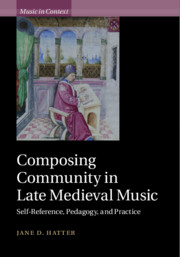
- Cited by 1
-
Cited byCrossref Citations
This Book has been cited by the following publications. This list is generated based on data provided by Crossref.
2019. Publications Received. Journal of the American Musicological Society, Vol. 72, Issue. 3, p. 939.
- Publisher:
- Cambridge University Press
- Online publication date:
- May 2019
- Print publication year:
- 2019
- Online ISBN:
- 9781108643597
- Series:
- Music in Context
- Subjects:
- Medieval and Renaissance Music, Music, Music Criticism


